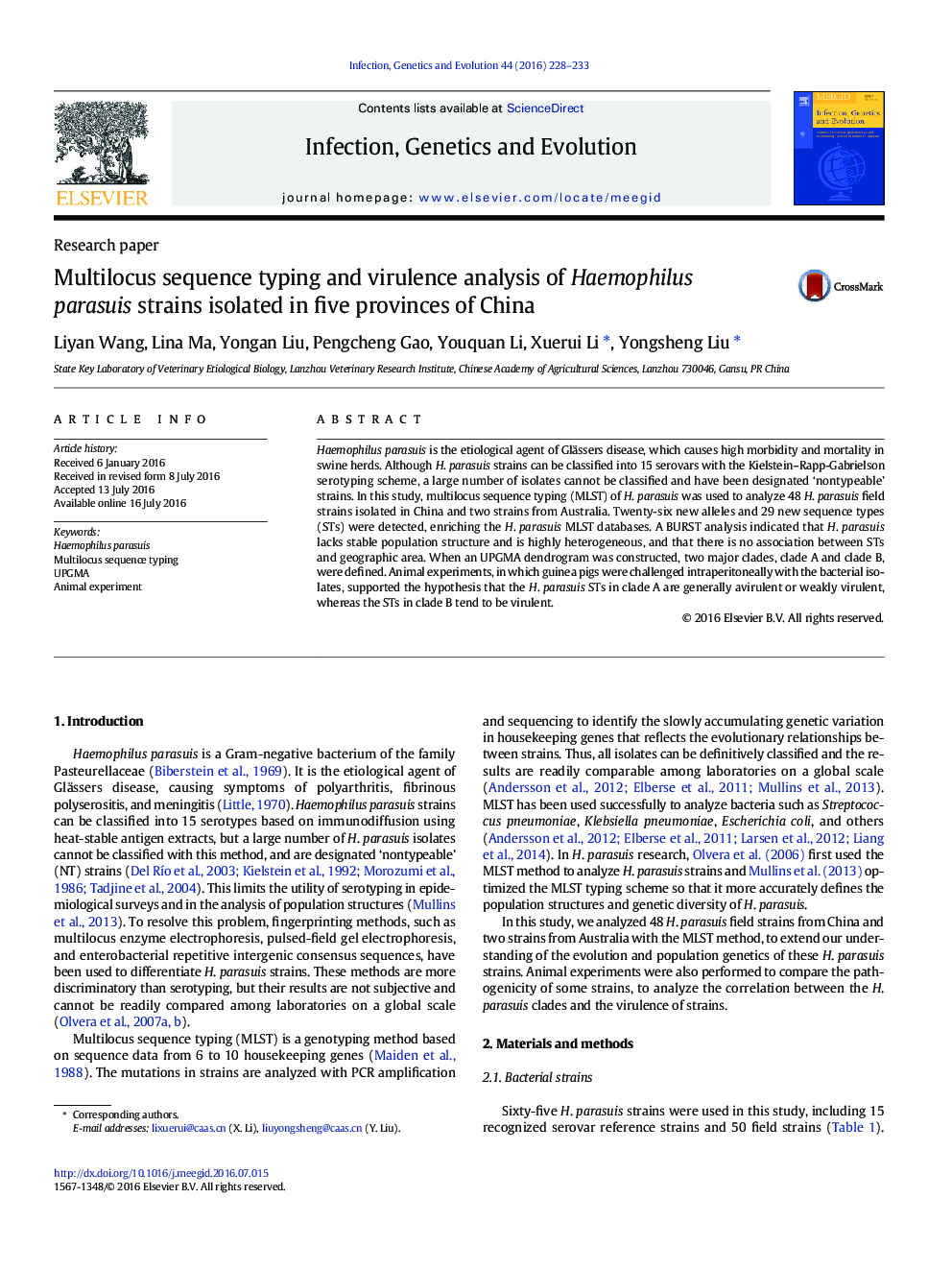| کد مقاله | کد نشریه | سال انتشار | مقاله انگلیسی | نسخه تمام متن |
|---|---|---|---|---|
| 5908136 | 1570159 | 2016 | 6 صفحه PDF | دانلود رایگان |

- Twenty-six new alleles and 29 new H. parasuis STs were detected by MLST.
- H. parasuis ST 181 was consisted of three serotypes.
- Animal experiment support the idea that H. parasuis in clade B tended to be virulent.
Haemophilus parasuis is the etiological agent of Glässers disease, which causes high morbidity and mortality in swine herds. Although H. parasuis strains can be classified into 15 serovars with the Kielstein-Rapp-Gabrielson serotyping scheme, a large number of isolates cannot be classified and have been designated 'nontypeable' strains. In this study, multilocus sequence typing (MLST) of H. parasuis was used to analyze 48 H. parasuis field strains isolated in China and two strains from Australia. Twenty-six new alleles and 29 new sequence types (STs) were detected, enriching the H. parasuis MLST databases. A BURST analysis indicated that H. parasuis lacks stable population structure and is highly heterogeneous, and that there is no association between STs and geographic area. When an UPGMA dendrogram was constructed, two major clades, clade A and clade B, were defined. Animal experiments, in which guinea pigs were challenged intraperitoneally with the bacterial isolates, supported the hypothesis that the H. parasuis STs in clade A are generally avirulent or weakly virulent, whereas the STs in clade B tend to be virulent.
Journal: Infection, Genetics and Evolution - Volume 44, October 2016, Pages 228-233